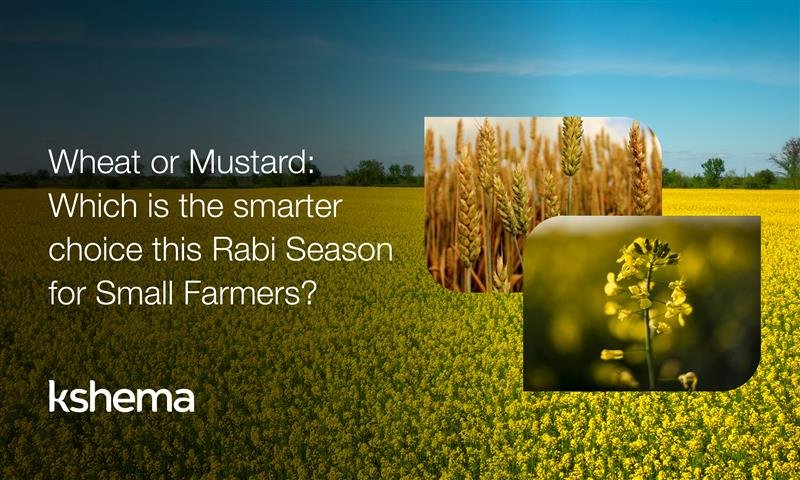Weather Forecast in Farming: Importance, Uses & Benefits for Farmers
India is primarily an agrarian country with more than half its population engaged in agriculture and allied activities. They contribute about 18% of India’s GDP. Agricultural activities, despite their importance, rely heavily on the unpredictable monsoon, making the importance of weather forecasting in agriculture and its role in improving farming efficiency more critical than ever.
Delays in the monsoon, unseasonal or excessive rain, and extreme weather patterns like heat or cold waves can impact crop growth, as well as the quality and quantity of production.
Why Weather Forecast in Farming is Important
The weather forecast in farming plays a vital role in modern agriculture because it directly influences every stage of crop production. From sowing to harvesting, farmers depend on accurate forecasts to make informed decisions that reduce risks and improve yields. The importance of weather forecasting in agriculture has grown significantly with climate change, as unpredictable rainfall, droughts, and heat waves threaten crop productivity.
By using the weather forecast in farming, farmers can:
Plan the right time for sowing and harvesting to avoid crop damage.
Optimize irrigation schedules, saving both water and energy.
Apply fertilizers and pesticides more effectively, reducing wastage.
Prepare for extreme weather events like storms, floods, or droughts.
For small and marginal farmers, the weather forecast in farming is more than just information—it is a lifeline that helps protect their livelihoods. Accurate weather forecasting for farmers ensures they can minimize losses, improve efficiency, and secure stable incomes. In short, the role of weather forecasting in agriculture is to provide farmers with the knowledge they need to adapt to changing weather conditions and sustain food production.
Weather Forecast in Farming
In view of such uncertainties, the weather forecast and its dissemination to farmers assumes more importance. Weather forecasts in farming are the answer to these problems.It is like having intelligence that helps farmers make better agricultural decisions by assessing the weather’s impact on crops. This intelligence helps make smarter decisions, such as optimizing irrigation, timing fertilization, and choosing the best days for fieldwork to enhance productivity.
Weather forecasts in farming boost agricultural production by reducing risks and losses, while also conserving resources through improved nutrient and water use efficiency. Accurate medium-term and real-time weather updates can mitigate weather impact on crops.
Read also: The Importance of Soil Health and How to Maintain It
Weather based farming
Weather forecasts in farming makes agriculture more efficient along with encouraging cost-saving farming methods. Weather-based farming counters the effects of weather aberrations which may cause
- Physiological under-performance by crops
- Physical damage to crops
- Soil erosion and
- May render the agricultural inputs ineffective.
Weather based farming relies on weather information, especially in precision agriculture which emphasises accuracy and control while growing crops. This practice uses modern technology like GPS, satellite imagery, IoT, sensors, drones, and AI to optimize farming by analyzing data.
Farming efficiency tips
Weather based farming techniques coupled with modern agricultural practices bring in more efficiency in farming. These smart farming solutions increase agricultural productivity. Some of these farming efficiency tips would include methods like drip irrigation and rainwater harvesting. The former delivers water directly to the plant’s roots. It reduces water requirements while increasing crop yields. Similarly, rainwater harvesting is a cost-saving method that helps farmers collect and store water, providing valuable support during dry spells.
Crop insurance and farmer risk management
Weather forecast, weather based farming, efficient farming practices equip the farmer with the knowledge to reduce risk to both crops and their income. However, one of the most effective ways for farmers to protect their incomes from any harm caused to their crops by extreme climate events is to buy crop insurance.
Crop insurance builds a financial safety net around farmers while providing them much needed security. The University of Chicago study cited above also found that crop insurance changes the behaviour of farmers towards farming.
Together, weather forecasts in farming and crop insurance form a dual shield—forecasts guide decisions, while insurance mitigates financial risks.
Farmers who purchased crop insurance expanded their cultivated land and increased up-front investments in seeds and fertilizer. With the safety net provided by insurance, they made larger investments despite forecasts suggesting they should reduce spending. In this way, insurance and forecasts work together as climate adaptation strategies: forecasts guide investment decisions, while insurance mitigates risk.
This shows the important role that crop insurance plans can play in mitigating risks to farmers’ produce and incomes when used in a strategic manner with weather forecasts in farming.
In conclusion, the weather forecast in farming is not just about predicting rain or sunshine—it is about empowering farmers with knowledge to improve efficiency, reduce risks, and secure their livelihoods in the face of climate change.
Frequently Asked Questions About Weather Forecast in Farming
Q1. Why is weather forecasting important for farmers?
A. Weather forecasting helps farmers plan sowing, irrigation, and harvesting, reducing risks from heavy rain, drought, or storms.
Q2. How does weather forecasting help farmers?
A. It provides timely information that allows farmers to protect crops, manage resources, and improve yields.
Q3. What are the uses of weather forecasting in agriculture?
A. Uses include crop planning, pest control, irrigation scheduling, and disaster preparedness.
Q4. What are the types of weather forecasting in agriculture?
A. Types include short‑term forecasts, medium‑range forecasts, and seasonal forecasts, each serving different farming needs.










